Text and Photos by Henrylito D. Tacio
Photos by Rhoy Cobilla
Anything bad doesn’t remain bad. All you need to do is find some good ways to properly use them. Such is the case of water hyacinth, more popularly known among Filipinos as water lily.
Water hyacinth is considered the most productive plant on earth as it yields more than 200 tons of dry matter per hectare per year under normal conditions. On water containing high concentrations of sewage, it yields up to 657 tons of dry matter per hectare.
“The plant is far more productive than the crops that have been carefully cultivated by man under near-ideal conditions of fertilization, irrigation, and pest control,” wrote John Bunton in an article which appeared in Far Eastern Agriculture.
The Department of Environment and Natural Resources (DENR) calls water hyacinth an “invasive alien species” (IAS). The International Union for Conservation of Nature defines IAS as “plants or animals that are introduced by man, accidentally or intentionally, outside of their natural geographic range into an area where they are not naturally present.”
Water hyacinth is a free-floating perennial aquatic plant native to tropical South America. It was introduced in the Philippines sometime in 1912 as an ornamental garden pond plant due to its beauty.
As they grow profusely, some of these were thrown out in the river. During the rainy season, they spread across the Pasig River. They were carried all the way from Laguna de Bay because of its rising water level.
Today, water hyacinth is considered a pest as 10 plants could produce well over 650,000 offspring within eight months.
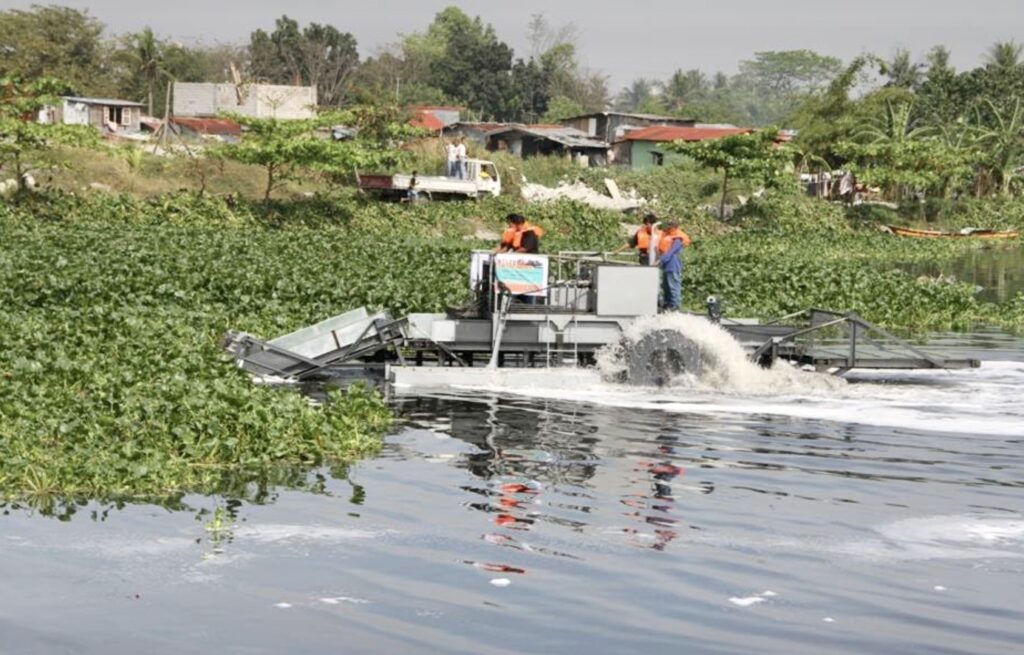
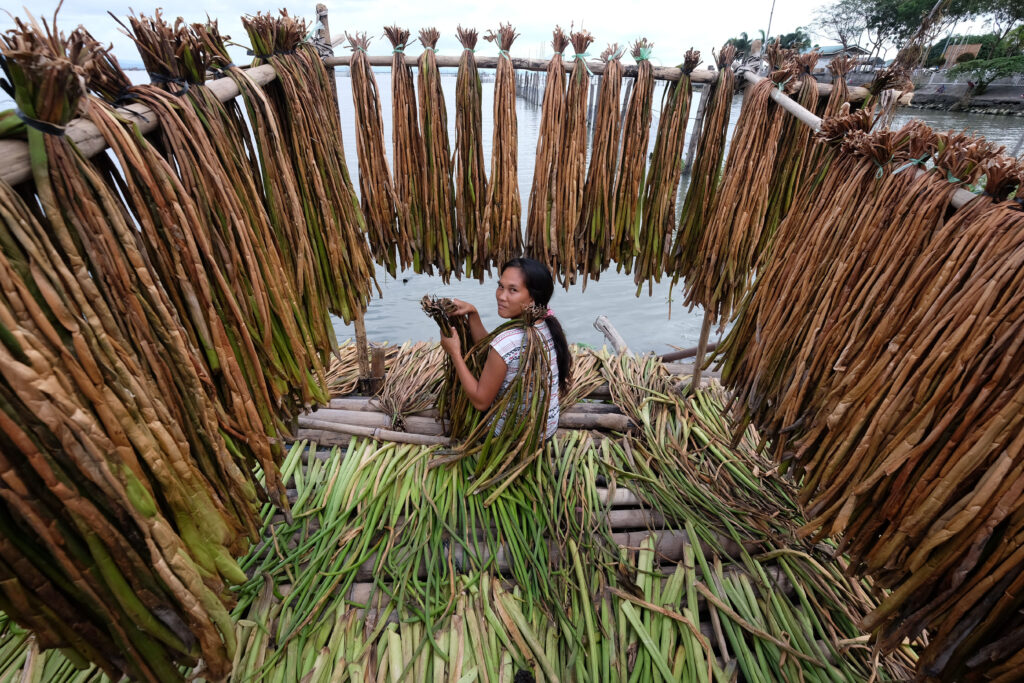
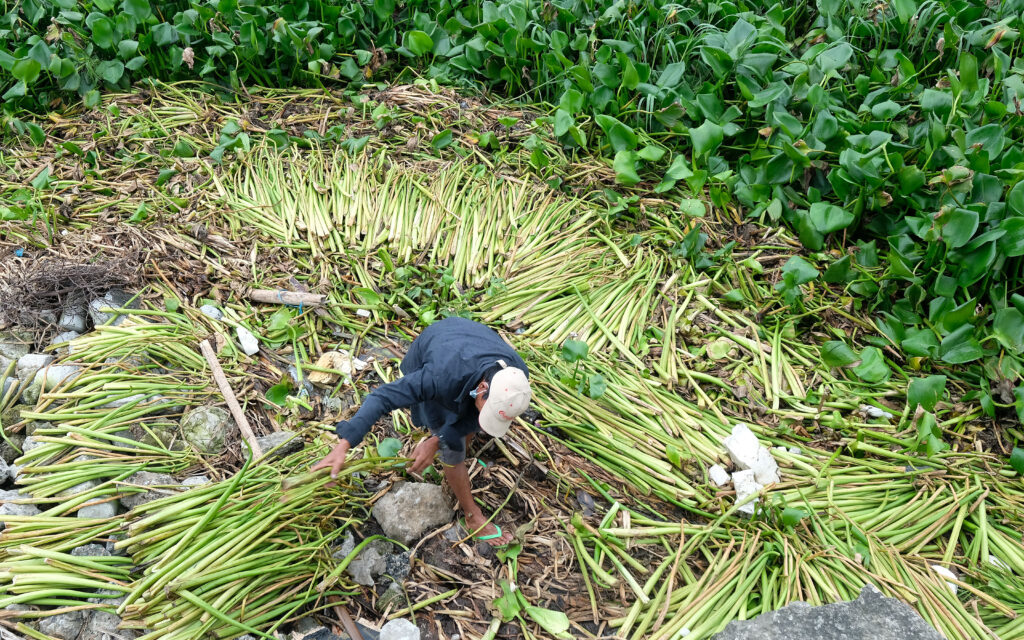
Water hyacinths have been threatening inland bodies of water. “(They) thrive in water with poor quality,” said an official from the Ecosystems Research and Development Bureau (ERDB), a DENR line agency. Pasig River and Laguna de Bay are among the country’s water-hyacinth-infested waterways. It is also a major nuisance in the Liguasan Marsh in Central Mindanao.
It must be recalled that in 2011, an estimated 20 hectares of water hyacinth were accumulated along the Rio Grande de Mindanao which caused massive flooding in Cotabato City and the provinces of North Cotabato and Maguindanao.
In Laguna de Bay, water hyacinth is a major headache. “These plants now cover some 20% of the lake’s surface area,” said the Laguna Lake Development Authority. Their proliferation threatens survival of aquatic species there since these plants block sunlight’s penetration into the water.
That is just one of their ecological impacts. Water hyacinths also reduce biological diversity, impact native submersed plants, and alter immersed plant communities by pushing away and crushing them. They likewise alter animal communities by blocking access to the water and/or eliminating plants the animals depend on for shelter and nesting.
The physical problems brought about by water hyacinth are now common knowledge. Water hyacinth mats clog waterways, making boating, fishing and almost all other water activities impossible. Many large hydropower schemes are suffering from the effects of water hyacinths.
Currently, there are several popular control mechanisms for preventing the spread of or eradicating water hyacinth: biological, chemical and physical control. Each has its benefits and drawbacks.
Physical control, using mechanical mowers, dredgers or manual extraction methods, is used widely. For its part, the Department of Science and Technology (DOST) has developed a machine that scoops up the plants to put them in good use.
Developed by engineers from the DOST’s Metals Industry Research and Development Center, the machine – called the Water Hyacinth Harvester – can collect and hold up to 25 kilograms of water hyacinth per load. When full, the harvester discharges the collected plants to a dumping site or an assisting barge.
The harvester mechanically removes water hyacinths using a specially-developed conveyor system. “Mechanically removing the plant is the better alternative because chemical methods are hazardous to plants and animals,” according to the research team.
In some parts of the world, several researches have been done to make water hyacinth into a profitable crop instead of a serious pest. In Kunming City, the provincial capital of China’s Yunnan Province, Dr. Zanwin Wang, an associate professor at the School of Development Studies in Yunnan University, thinks of turning the nuisance plant as the waste material to be used for producing biogas.
In Dianchi Lake, water hyacinth grows profusely because of the polluted water. To find out whether biogas is really feasible, Dr. Wang assessed a proposed biogas project designed to use the water hyacinth. The study wanted to find out whether biogas is cost-effective to control the noxious weed, help clean up water pollution, and generate a source of renewable energy.
“Compared with the current water hyacinth control method, the use of water hyacinth to produce biogas has two major advantages,” said Dr. Wang, who headed the study. For one, the biomass of water hyacinth is used rather than disposed of as a waste. For another, the emission of landfill gas is avoided.
In particular, the government can spend less on the control of water hyacinth’s expansion as water hyacinth is used as a raw material of biogas. Currently, the government pays $16.80 per ton for the collection and disposal of water hyacinth. In comparison, it only spends $10.71 per ton for using water hyacinth in producing biogas.
Due to its improved environmental and economic performance in controlling the expansion of water hyacinth, the use of water hyacinth in biogas production “can be a potential option to respond to policies on water pollution control, renewable energy development, and carbon emission reduction,” the study pointed out.
In the Philippines, some cottage industries have sprouted – thanks to water hyacinth. Some products made out of the nuisance plant include trays, chests, bags, traditional bags, hampers, cabinets, lamp shades of various shapes and sizes and even dining tables and slippers.
A study made by some researchers from the De La Salle Araneta University reported that water hyacinths provide livelihood for hundreds of families in Las Piñas, so much that the waterways of the city have been cleaned up.
In the past, the Zapote River was swamped with water hyacinth causing flooding in many areas. Cynthia Villar, then a congresswoman, thought of turning them into baskets, trays, mats, hampers, slippers, chests, lampshades, and other products.
Villar’s brainchild became a profitable venture and helped reduce flooding incidents. To clear the river of the pesky aquatic plants, residents harvest them and dry the stalks, which become the raw material for those novel products.
“Wala namang cost of raw materials,” Villar, now a senator, was quoted as saying. “Parang ang investment nila is the labor part of it.”
In 2015, Villar went further by launching the Water Lily Festival. It features demonstrations on basket weaving, variety shows participated in by home-grown talents, trade fair featuring products made from water hyacinth as well as other products from the various barangay livelihood projects.
“We have come a long way with the idea of transforming these flowers into unique arts and crafts,” Villar pointed out. “From swamping our waterways and causing flooding in our city, these lovely blooms have become stable sources of livelihood not only for Las Piñas residents but also for many of our kababayans, especially those who live near the rivers.”
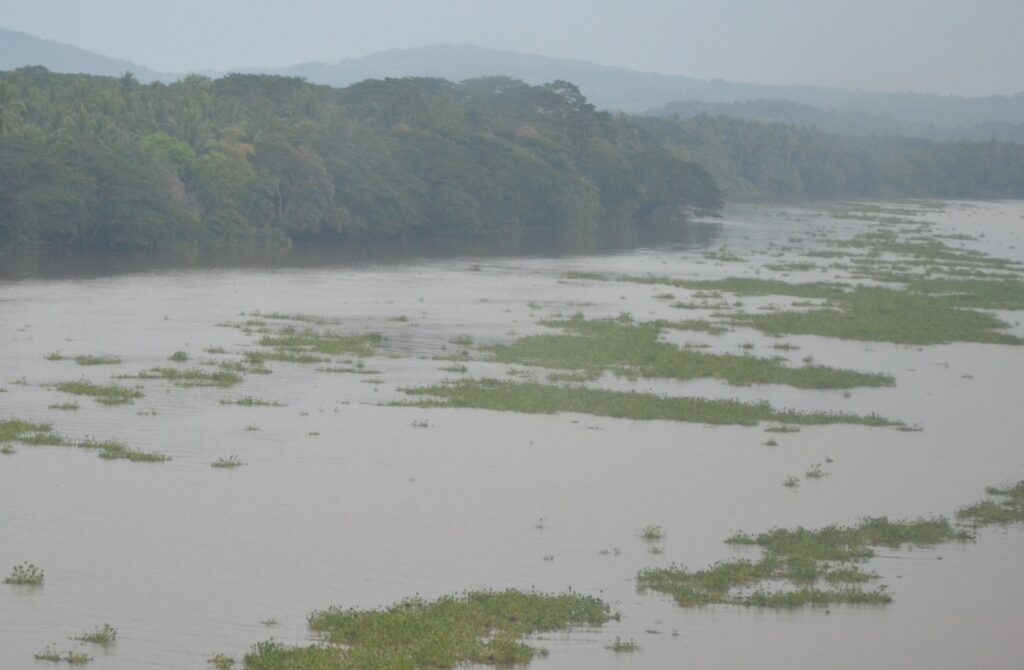
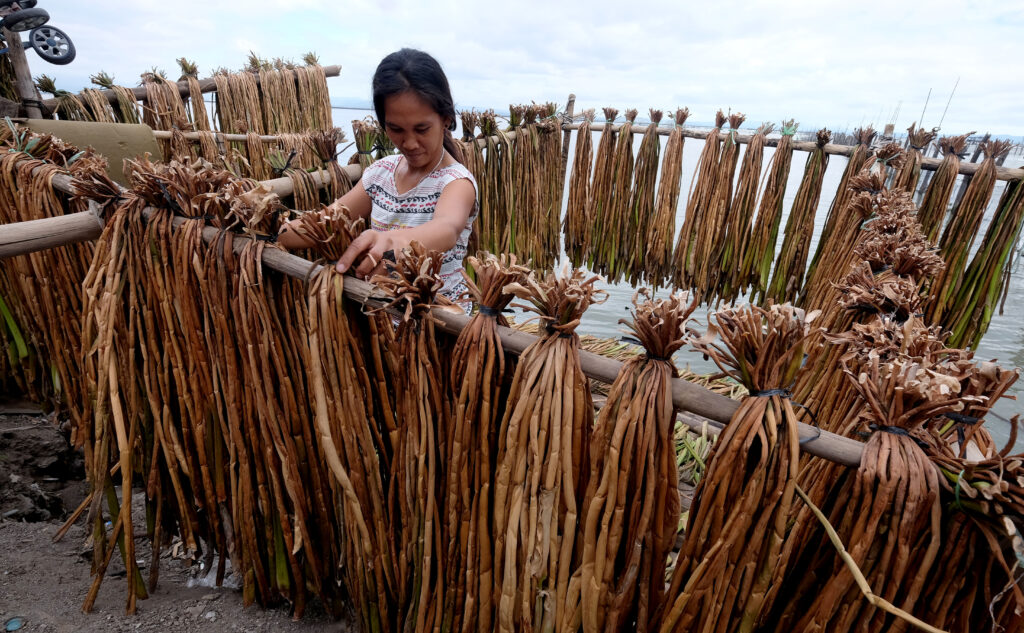
Water hyacinth can also be used to aid the process of water purification either for drinking water or for liquid effluent from sewage systems.
For more than a decade, the US NASA’s laboratories conducted research on the use of water hyacinth for treating and recycling wastewater. Researchers discovered that water hyacinths thrive on sewage by absorbing and digesting nutrients and minerals from wastewater. Thus, a means of purifying water at a fraction of the cost of a conventional sewage treatment.
Some added benefits of the aquatic plants are that after routine harvesting, they can be used as fertilizer and high protein animal feed.
Research made by the author showed that using the water hyacinth as animal fodder is a traditional practice in many areas of Asia, including China, Bangladesh, Indonesia, India, Malaysia, the Philippines, and Thailand.
In Malaysia, for instance, fresh water hyacinth is cooked with rice bran and fishmeal and mixed with copra meal as feed for pigs and ducks. However, it is suited to all animals as water hyacinth has high water and mineral content.
In China, it is common practice to mix water hyacinth in a pig swill containing a variety of other vegetable waste matter. The mix is boiled for hours until it is reduced to a mash. Coconut meal, fish meal and groundnut cake plus corn and rice bran, are often added to the mash.
Water hyacinth is also a good feed for fish. Take the case of the Chinese grass carp, a fast-growing fish which eats aquatic plants. It grows at a tremendous rate and reaches sizes of up to 32 kilograms. An edible fish with tasty white meat, it eats submerged or floating plants and also bank grasses. The fish can be used for weed control and will eat up to 18-40 percent of its own body weight in a single day.
Another agricultural use of water hyacinth is by turning them into green manure or as compost. As a green manure, it can be either ploughed into the ground or used as mulch. The plant is ideal for composting. After removing the plant from the water, it can be left to dry for a few days before being mixed with ash, soil and some animal manure.
Yes, not all bad things can stay bad. Water hyacinth is a proof.

